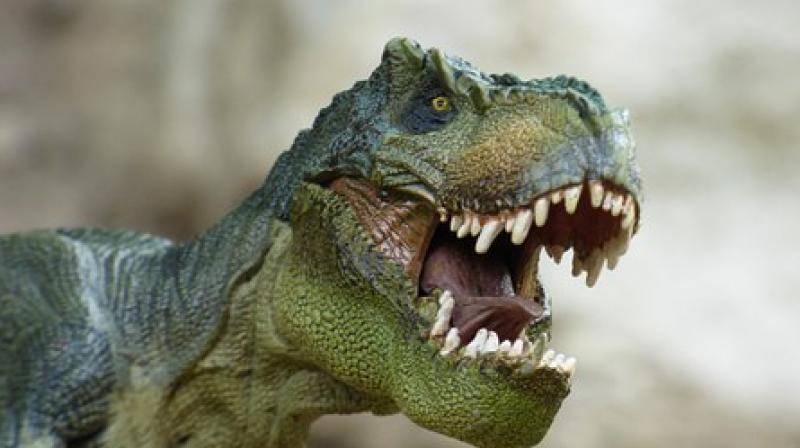New species of duck-billed dinosaurs identified

Washington: Scientists have identified a new species of duck-billed dinosaurs which roamed the Earth around 80 million years ago. The study, published in the Journal of Systematic Palaeontology, describes the most complete skull of a duck-billed dinosaur from Big Bend National Park in the US as a new genus and species, named Aquilarhinus palimentus. This dinosaur has been named for its aquiline nose and wide lower jaw, shaped like two trowels lay side by side.
In the 1980s, Professor Tom Lehman from Texas Tech University in the US discovered badly-weathered bones. Research in the 1990s revealed an arched nasal crest thought to be distinctive of the hadrosaurid Gryposaurus. However, it was not until recent analysis that the researchers came to realise that the specimen was more primitive than Gryposaurus and the two major groups of duck-billed dinosaurs.
"This new animal is one of the more primitive hadrosaurids known and can, therefore, help us to understand how and why the ornamentation on their heads evolved, as well as where the group initially evolved and migrated from," said Albert Prieto-Marquez from the Miquel Crusafont Catalan Institute of Paleontology in Spain. "Its existence adds another piece of evidence to the growing hypothesis, still up in the air, that the group began in the south-eastern area of the US," Prieto-Marquez said.
Duck-billed dinosaurs, also known as hadrosaurids, were the most common herbivorous dinosaurs at the end of the Mesozoic Era, and all had a similar-looking snout. The front of the jaws meets in a U-shape to support a cupped beak used for cropping plants. The beak of some species is broader than in others, but there was no evidence of significantly different shape and therefore likely also different feeding style in duckbills until Aquilarhinus was discovered.
The lower jaws of Aquilarhinus meet in a peculiar W-shape, creating a wide, flattened scoop. Around 80 million years ago, this particular dinosaur would have been shovelling through loose, wet sediment to scoop loosely-rooted aquatic plants from the tidal marshes of an ancient delta, where today lies the Chihuahuan desert. The jaw and other characteristics of the specimen show that it does not fit with the main group of duck-billed dinosaurs known as Saurolophidae, researchers said.
It is more primitive than this group, suggesting there might have been a greater number of lineages than previously recognised that evolved before the great radiation that gave rise to the bewildering array of unadorned, solid and hollow-crested forms. Aquilarhinus sported a simple bony crest, one shaped like a humped nose, researchers said.

